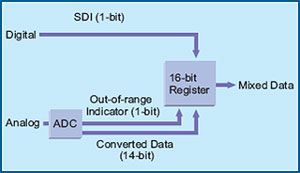| Automatic Glass Handling System with Multi-Function DAQ Card | |
 |
Industry: |
|
LCD Panel Manufacturing |
|
 |
Application Background: |
|
As the size of the LCD panel continues to increase, so goes the challenge of keeping short the tact time and maintaining high-quality production through modern techniques and methods. The loading and unloading of panels from the cassette slots is one of the most important phases in LCD production. In a traditional glass handling system, a robot goes through the panel cassette slot by slot to detect whether a panel is present or not. When the robot detects a loaded slot, it automatically unloads the panel; if not, the robot scans the next slot. After optimizing this production process, the system controller was able to scan all the slots, record the position of the loaded slots, and guide the robot in unloading the panels only from loaded slots, thus saving precious production time. |
|
 |
The Challenge: |
|
Faster response time is a key factor for efficient and quality output. This method involves two simultaneously sampled signals for accurate mapping: an analog signal from the infrared ray sensor that detects whether the slots are full or empty, and a digital signal from a photo sensor that tells the positions of the slots. |
|
 |
The Solution:ADLINK DAQ-2204 64-CH 12-bit 3 MS/s Multi-Function DAQ Card |
|
The DAQ-2204 is a 64-channel, high-performance and multi-function DAQ card with 12-bit resolution. With a maximum sampling rate of 3 MS/s, the DAQ-2204 guarantees a quick response time. The DAQ-2204 is also equipped with four synchronous digital inputs which are sampled with the 12 analog inputs using the same time-base clock. These features and more make the DAQ-2204 suitable for processing data from the infrared and position sensors while effectively matching the status/position of each slot for accurate and straightforward robot control. |
|
 |
Solution Diagram: |

|
|
 |
Glossary: |
|
Synchronous Digital Inputs (SDI) |
|
 |
|
